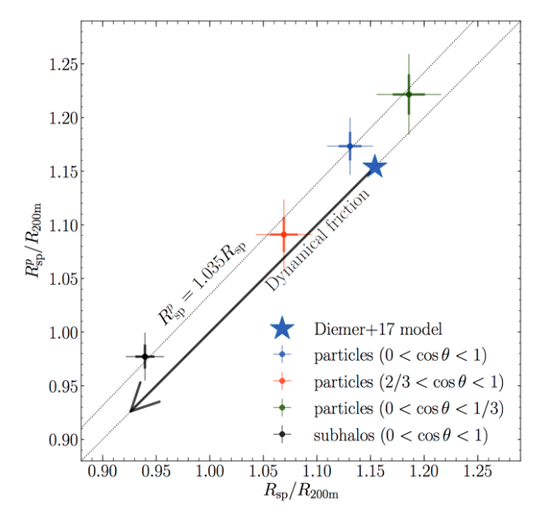研究成果藝廊 > 理論天文物理理論天文物理
(Theory)
研究成果藝廊
理論天文物理理論天文物理 (Theory)
| Dark matter distribution from the analysis of density and velocity fields |
|
圖片來源: Okumura et al. 2017

The figure shows the constraints on physical boundaries of dark matter halos, known as splashback radii, from the density and velocity fields, respectively shown in the horizontal and vertical axes.
|
| Understanding the large-scale structures of the Universe gives a fundamental basis on which we understand the structure formation. We have been investigating the large-scale distribution of dark matter using analytic theory (e.g., Okumura et al. 2017). Below we show the constraints on physical boundaries of dark matter halos, known as splashback radii, from the density and velocity fields, respectively shown in the horizontal and vertical axes. The blue cross is the constraints when the profile is traced by all the dark matter particles, while the green and red ones are when only the particles parallel and perpendicular to the major axis of a halo are used. The thick and thin error bars correspond to 1-sigma and 2-sigma confidence levels, respectively. The black cross is the result when the profile is traced by all the subhalos. The blue star is a theoretical prediction of Diemer et al. (2017). The arrow indicates a range of shifts for the splashback radius due to the dynamical friction of subhalos. The upper dotted line represents the case of the velocity-based splashback radius being 3.5% larger than the density-based one. |
